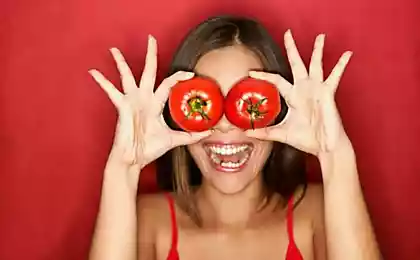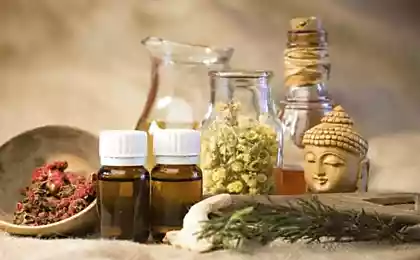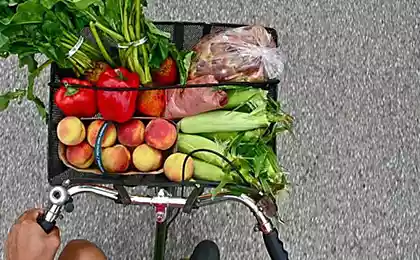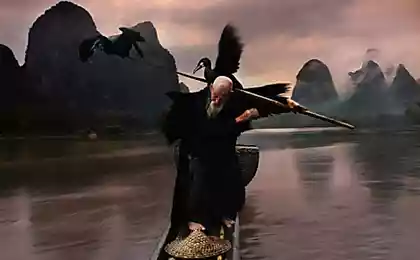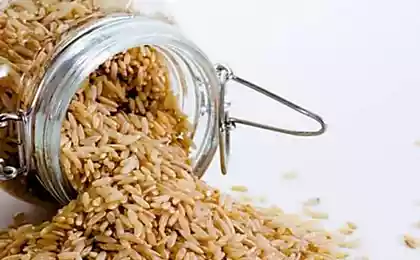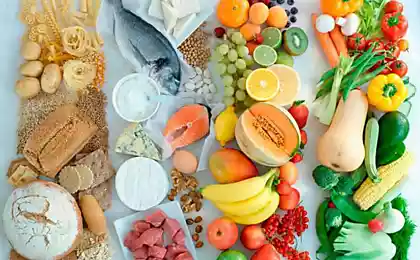230
Why is it sometimes worth eating semolina?
With manna porridge began the morning hundreds of millions of residents of the Soviet Union. In our country, there is probably no person who would not try it. As a child, our parents fed us manka, now we feed our children manka. Why is such a beloved manka not popular in Europe and other countries of the world?
505150
DepositPhotos
Shortly about semolina cereal, or semolina cereal, is a cereal of coarse grinding from wheat, the average particle diameter of which is from 0.25 to 0.75 mm. Manca is a byproduct in the production of wheat flour, when about 2% of small grain fragments remain after grinding.

Both hard and soft varieties of wheat are used for the manufacture of manca. You can find out what kind of semolina you are holding in your hands by the marking on the package: M from soft varieties, T from hard ones, MT from a mixture of varieties.
Semolina T contains more protein, less starch, cook longer (10-15 minutes vs. 5-8 in soft varieties) and gives porridge with a noticeably large structure. These are, in fact, two different porridges - both in taste and in usefulness.
Manca is the only cereal that is digested in the lower intestine and only there is absorbed into its walls. Liquid semolina include in diets prescribed for diseases of the gastrointestinal tract and after operations on the stomach and intestines.
In Russia, manca appeared in the XIII century and was very expensive. Everything changed in the USSR, when semolina began to be made from wheat processing waste. Cheap, and therefore publicly available product quickly fell in love with millions of Soviet citizens.
Most often, semolina was used for cooking, that is, for the preparation of semolina porridge. This dish became a key in the menu of kindergartens, schools, technical schools, universities and public canteens.
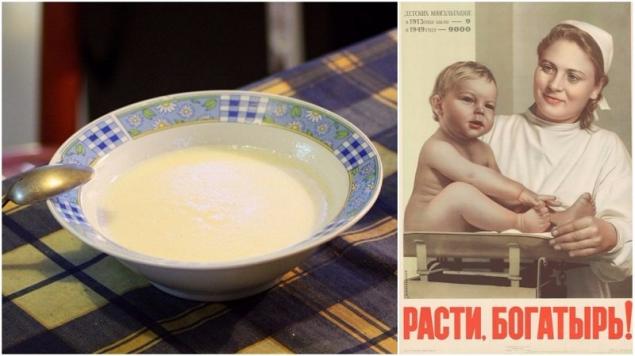
In Europe, semolina is used for the most part for making puddings, desserts, baking, various sweets. So, in Italy, flour from hard varieties of wheat is called semoline. From semolina make pasta, puddings, Italian gnocchi dumplings, add it to the pizza dough.
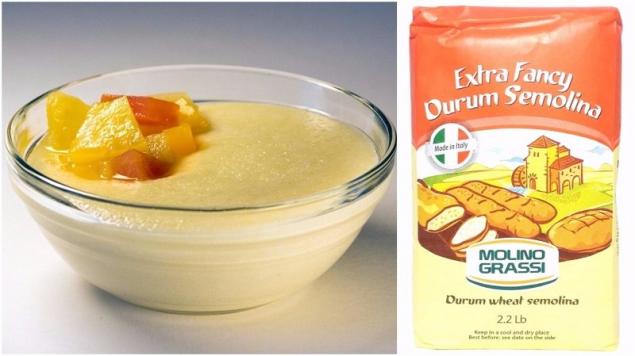
In the East, sweets are prepared from sebum, mixing it with almonds, sugar, butter and pine nuts. In Turkey, halva irmik helvasi is prepared from semolina.
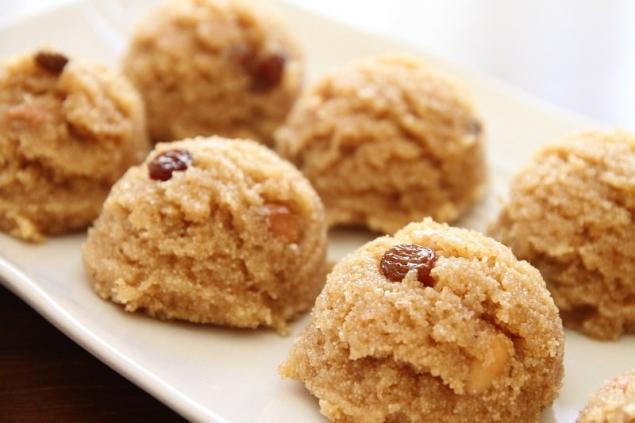
In Finland, the dessert vispipuuro is popular - cold manca whipped with berries.

In India, for various festivals and holidays, rava ladu is prepared - homemade semolina candy.

In Germany and Lithuania, Bubert is popular - semolina pudding with an egg. Unlike porridge, the bub does not boil, but only brews. Boiled cereals, removed from the fire, for some time leave to swell under the lid. In the cooled cereals are introduced rubbed with sugar yolks. At the last stage of preparation, whipped proteins are added.
623662
To date, there is no clear opinion, is semolina useful. On the one hand, manca 70% consists of starch, it has a lot of proteins, various vitamins and minerals. Manca is cooked very quickly, so all trace elements contained in it are preserved. It contains almost no fiber, it can be recommended in the postoperative period.
And yet, to introduce this dish into your diet is with caution. There is a lot of gluten protein in semolina, which can cause food allergies. In addition, about one in 800 Europeans suffer from a severe hereditary disease – celiac disease, or gluten intolerance.
Celiac disease is insidious in that it skillfully disguises itself as many other diseases. As a rule, the disease first manifests itself in childhood, when the child begins to eat foods with gluten.

Gluten causes atrophy of the mucous membrane of the small intestine, which disrupts intestinal absorption and develops chronic diarrhea. Inflamed intestines are not able to absorb even processed substances, which leads to various health problems.
Very often semolina is prepared for children, but it should be noted that a high starch content for the child's body is not required, and moreover, the child's stomach is not ready to digest starch carbohydrates, which are rich in semolina.
Gliadin, contained in semolina, causes necrosis of the intestinal villi, and phytin changes the intestinal microflora so that it ceases to absorb vitamin D and iron necessary for the growth of the child.
Therefore, young children, who are fed manna porridge two or three times a day, lose calcium and often get rickets, and older people suffer from osteoporosis. Against manna porridge and pediatricians. Children older than a year, they advise to give semolina no more than once every 7-10 days.
For some reason, parents put the most sugar in semolina. Because of this, it turns out sweet, and children love sweets. The abundant use of manna porridge in the morning and evening is fraught with constipation.
Manca is a carbohydrate food, and carbohydrates tend to turn into adipose tissue. Thus, instilling love for manna porridge, you really contribute to the obesity of the child.
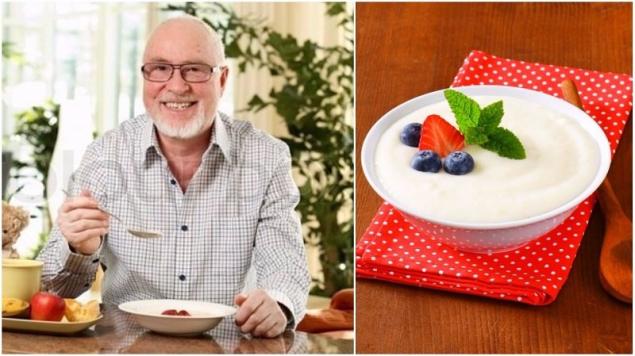
Of course, semolina is not useless - how else would so many children grow up on it, including us? It is a wonderful dietary product, improves the absorption of proteins, is indispensable for chronic kidney failure.
Can children eat semolina?After weighing the pros and cons, parents must decide. Pediatricians recommend not giving sebum to children under one year old and strictly limit the use of sebum by children under three years old.
All the troubles that are fraught with semolina porridge in early childhood are not at all terrible for an adult, and in old age the shortcomings of protein-deprived cereals turn into advantages. Elderly people semolina is very useful - it helps to avoid hypermineralization of blood cells, prevents colon cancer, does not irritate the stomach and perfectly saturates.
505150
DepositPhotos
Shortly about semolina cereal, or semolina cereal, is a cereal of coarse grinding from wheat, the average particle diameter of which is from 0.25 to 0.75 mm. Manca is a byproduct in the production of wheat flour, when about 2% of small grain fragments remain after grinding.

Both hard and soft varieties of wheat are used for the manufacture of manca. You can find out what kind of semolina you are holding in your hands by the marking on the package: M from soft varieties, T from hard ones, MT from a mixture of varieties.
Semolina T contains more protein, less starch, cook longer (10-15 minutes vs. 5-8 in soft varieties) and gives porridge with a noticeably large structure. These are, in fact, two different porridges - both in taste and in usefulness.
Manca is the only cereal that is digested in the lower intestine and only there is absorbed into its walls. Liquid semolina include in diets prescribed for diseases of the gastrointestinal tract and after operations on the stomach and intestines.
In Russia, manca appeared in the XIII century and was very expensive. Everything changed in the USSR, when semolina began to be made from wheat processing waste. Cheap, and therefore publicly available product quickly fell in love with millions of Soviet citizens.
Most often, semolina was used for cooking, that is, for the preparation of semolina porridge. This dish became a key in the menu of kindergartens, schools, technical schools, universities and public canteens.

In Europe, semolina is used for the most part for making puddings, desserts, baking, various sweets. So, in Italy, flour from hard varieties of wheat is called semoline. From semolina make pasta, puddings, Italian gnocchi dumplings, add it to the pizza dough.

In the East, sweets are prepared from sebum, mixing it with almonds, sugar, butter and pine nuts. In Turkey, halva irmik helvasi is prepared from semolina.

In Finland, the dessert vispipuuro is popular - cold manca whipped with berries.

In India, for various festivals and holidays, rava ladu is prepared - homemade semolina candy.

In Germany and Lithuania, Bubert is popular - semolina pudding with an egg. Unlike porridge, the bub does not boil, but only brews. Boiled cereals, removed from the fire, for some time leave to swell under the lid. In the cooled cereals are introduced rubbed with sugar yolks. At the last stage of preparation, whipped proteins are added.
623662
To date, there is no clear opinion, is semolina useful. On the one hand, manca 70% consists of starch, it has a lot of proteins, various vitamins and minerals. Manca is cooked very quickly, so all trace elements contained in it are preserved. It contains almost no fiber, it can be recommended in the postoperative period.
And yet, to introduce this dish into your diet is with caution. There is a lot of gluten protein in semolina, which can cause food allergies. In addition, about one in 800 Europeans suffer from a severe hereditary disease – celiac disease, or gluten intolerance.
Celiac disease is insidious in that it skillfully disguises itself as many other diseases. As a rule, the disease first manifests itself in childhood, when the child begins to eat foods with gluten.

Gluten causes atrophy of the mucous membrane of the small intestine, which disrupts intestinal absorption and develops chronic diarrhea. Inflamed intestines are not able to absorb even processed substances, which leads to various health problems.
Very often semolina is prepared for children, but it should be noted that a high starch content for the child's body is not required, and moreover, the child's stomach is not ready to digest starch carbohydrates, which are rich in semolina.
Gliadin, contained in semolina, causes necrosis of the intestinal villi, and phytin changes the intestinal microflora so that it ceases to absorb vitamin D and iron necessary for the growth of the child.
Therefore, young children, who are fed manna porridge two or three times a day, lose calcium and often get rickets, and older people suffer from osteoporosis. Against manna porridge and pediatricians. Children older than a year, they advise to give semolina no more than once every 7-10 days.
For some reason, parents put the most sugar in semolina. Because of this, it turns out sweet, and children love sweets. The abundant use of manna porridge in the morning and evening is fraught with constipation.
Manca is a carbohydrate food, and carbohydrates tend to turn into adipose tissue. Thus, instilling love for manna porridge, you really contribute to the obesity of the child.

Of course, semolina is not useless - how else would so many children grow up on it, including us? It is a wonderful dietary product, improves the absorption of proteins, is indispensable for chronic kidney failure.
Can children eat semolina?After weighing the pros and cons, parents must decide. Pediatricians recommend not giving sebum to children under one year old and strictly limit the use of sebum by children under three years old.
All the troubles that are fraught with semolina porridge in early childhood are not at all terrible for an adult, and in old age the shortcomings of protein-deprived cereals turn into advantages. Elderly people semolina is very useful - it helps to avoid hypermineralization of blood cells, prevents colon cancer, does not irritate the stomach and perfectly saturates.
Vitamin bomb: all attention is focused on it! Properties of quince you didn't know about.
What to celebrate the new year, 2018: festive images for all zodiac signs



